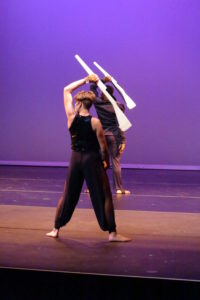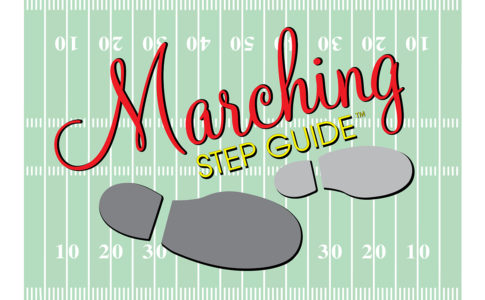The seven-time WGI winter guard champion has mastered “A New Way of Living,” recording its 2021 eShowcase performance after just one in-person rehearsal while also preparing for a socially distant 40th anniversary MASKerade.
If you’ve struggled with virtual rehearsals, you might want to chat with the creative people behind the Pride of Cincinnati, seven-time winter guard champion in WGI Sport of the Arts. 2021 marks the 40th anniversary of the World Class group, and that’s not the only reason that its work stands out this year. Pride of Cincinnati pulled together an entire show for WGI’s new eShowcase category with just one in-person rehearsal and one recording day. The rest of the work happened online. Andrew Toth, one of the group’s choreographers, talks about the Pride of Cincinnati’s unique season.
Halftime: What drew you to the marching arts?
Toth: I’ve been performing in color guard since I was about 10 and have done color guard [in] all of the pageantry arts—marching band, drum corps, [and] winter guard. I ended up moving to the Midwest in 1997 to perform with Pride of Cincinnati. I was a member there in 1997 and 1998, and I started teaching there in 1999 as one of the choreographers and have been there ever since. Pride has become a home away from home for me.
Halftime: Tell us about the Pride of Cincinnati’s history. 
Toth: Pride of Cincinnati actually started off as a drum and bugle corps. This [year] is going to be the 40th anniversary of the Pride of Cincinnati as a drum corps and a winter color guard. We have big plans for [celebrating] this year. We’re hosting an event called MASKerade. … The members are going to be performing excerpts from each of the four decades of the Pride of Cincinnati. They’ll also do a version of the eShowcase project live. The MASKerade is being held outdoors in a [sculpture] park [on May 1], so we’re taking all COVID guidelines into consideration.
Halftime: Why did it feel important to have a season this year?
Toth: We all really enjoy working together. We knew that the members were interested in having some kind of season. We thought that WGI’s new class was an opportunity for us to try something new and to offer a different experience. …
This is super special for us because we’re not only grateful that we can participate in WGI and offer a different perspective, but this film is going to be a piece of Pride’s history now. It’s going to be something that we’re all going to be able to look back on and say, “Even when times are tough, we’re still able to offer a place for people to come together.” That’s really what Pride’s about.
Halftime: What has this season looked like logistically?
Toth: We started back in November doing all of our rehearsals on Zoom on Sundays. This would be an hour or so of dance class and an hour or so of spinning technique. From there, we started learning choreography. … We had one rehearsal that was live and in person, and then the following weekend, we did the filming for the eShowcase.
It was challenging, of course, to teach on Zoom, but the members were super excited and receptive. We [used] Google Classroom to upload videos for them to learn choreography, and then we could work on it together over Zoom. Every week they would have an assignment where they would review a technical exercise or perform whatever choreography they had learned that weekend. Then they submitted a video of them doing it to the music, and someone on staff would review the homework assignment and give them feedback, so that when we did the next Zoom class on Sunday, we could move forward.
That was a bit of a challenge, but I was so impressed at how similar they looked when they came to the first in-person rehearsal. To me, that was a testament to the effort the performers put into learning everything and of course [to] the staff for giving as much feedback as they did.
The weekend we filmed was interesting because we were seeing them for the first time, but it was almost like auditions, Halloween, Christmas camp, Valentine’s Day, and WGI week [put together]. The members have all these traditions that they like to do throughout the season, so they were trying to cram all of that in there, and it was really cute to watch.
Halftime: What advice do you have for other groups and marching arts performers?
Toth: I believe that there is a solution to every challenge, and if that means doing color guard in a different way, then that’s okay. If that means spending more time on a computer until we can be together again, that’s okay. Finding ways to make it enjoyable and providing places for people to work on their craft and perform take some creativity, but there are solutions.
Halftime: Can you describe this year’s show?
Toth: The show is called “A New Way of Living,” and it represents how each of us may feel … a longing to belong and … and experiencing distance, which I think we’re all familiar with at this point. The show is filmed and takes place inside a theater. It starts off with individuals being audience members and looking up to an empty stage and imagining what it would be like to be on stage. Throughout the piece, gradually people become a part of what is going on [up on the] stage. It’s this idea of wanting to belong to something that may seem out of reach, but with hope, spirit, and guidance, they eventually all belong onstage and all belong together.


